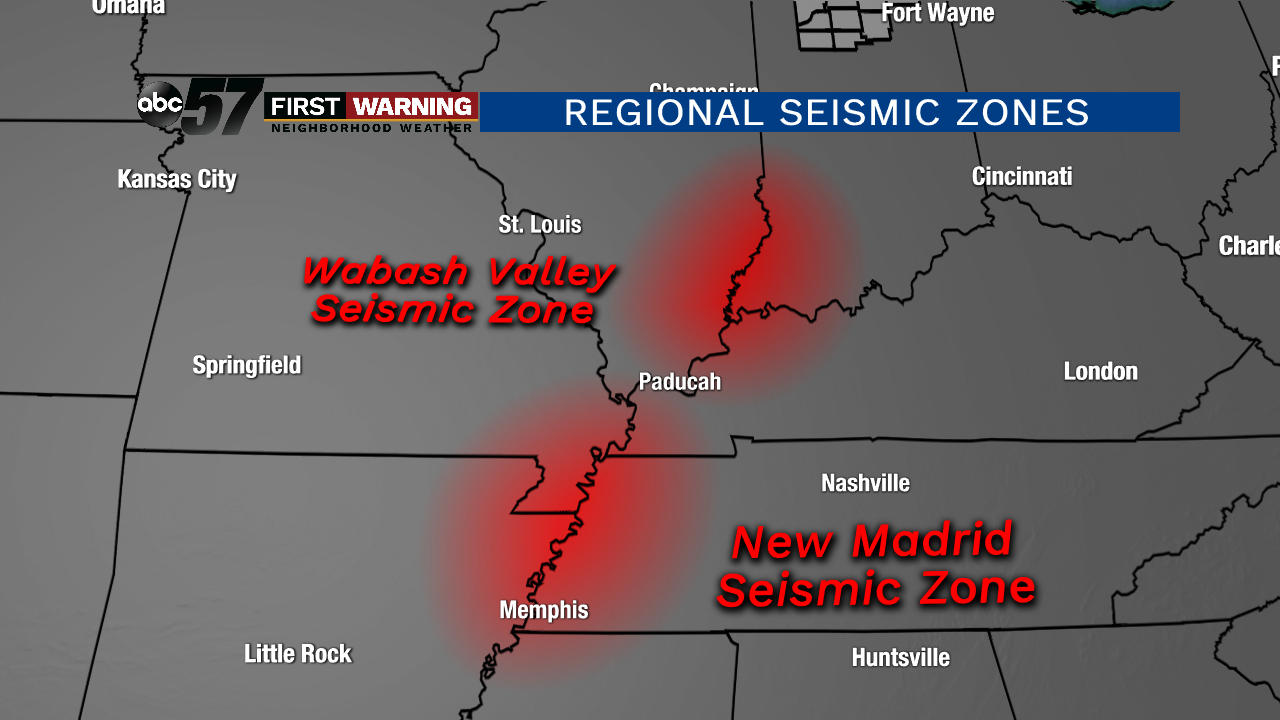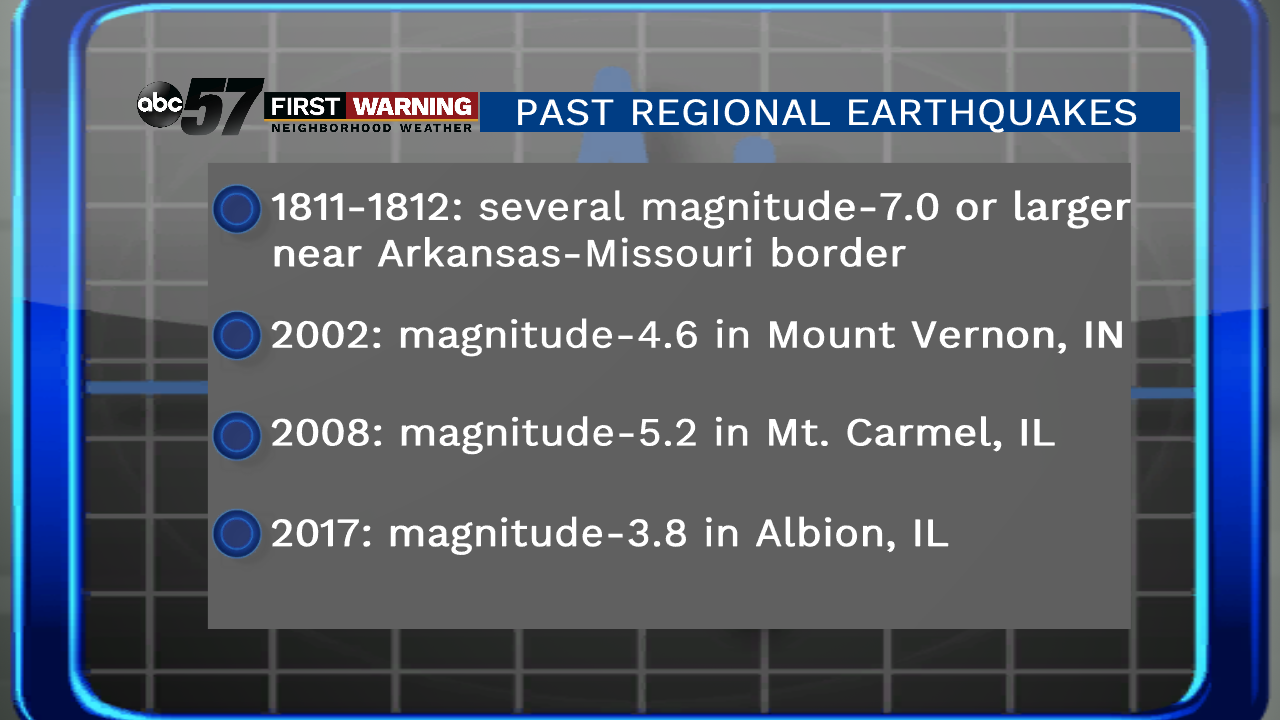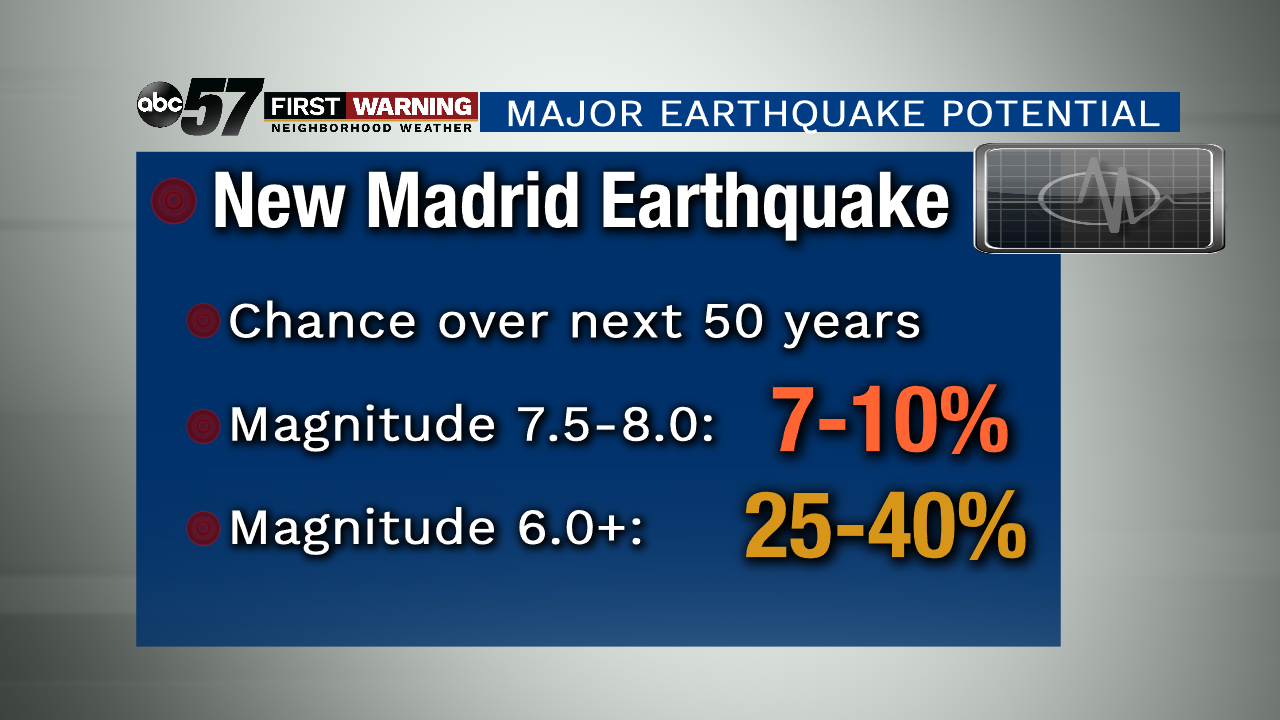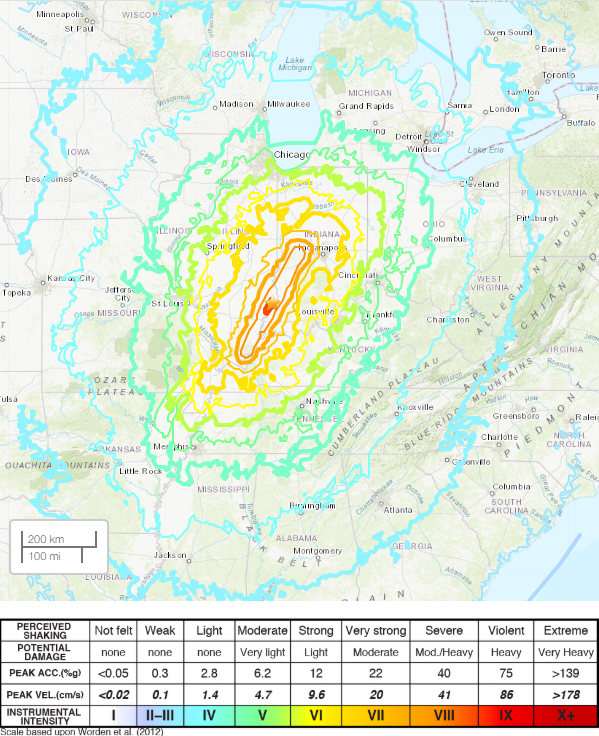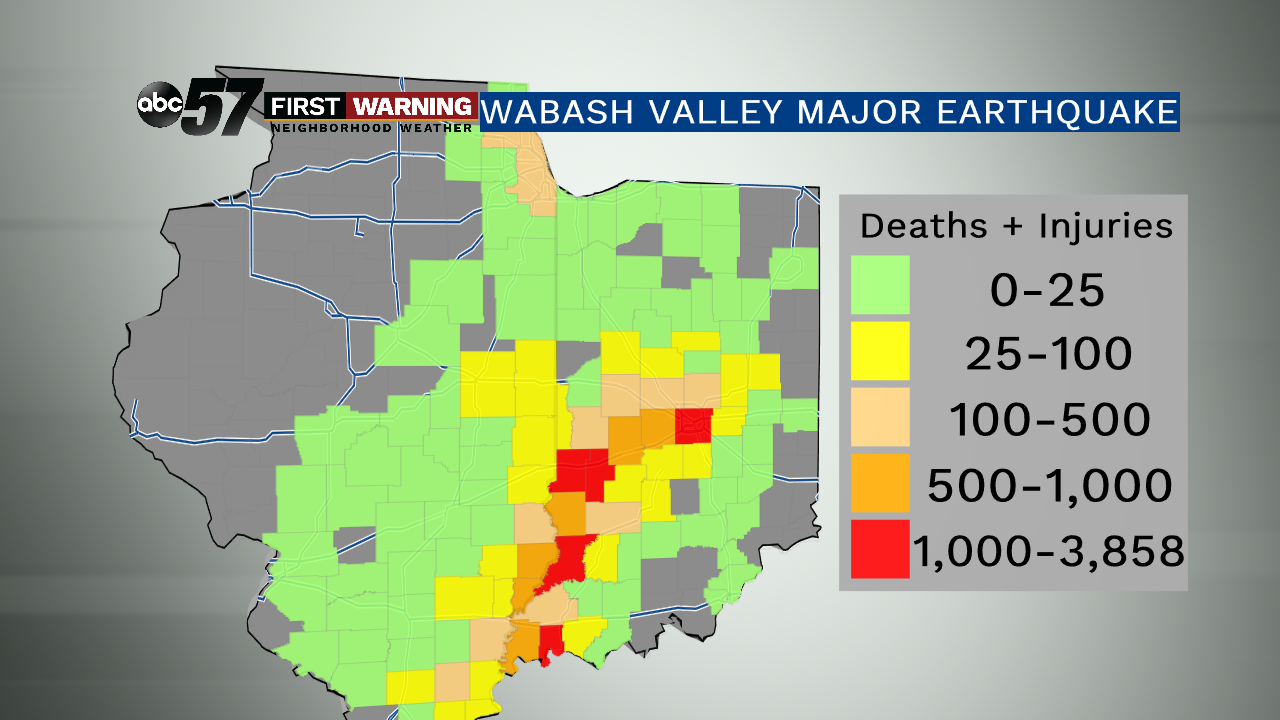The chance of a major earthquake in or near Indiana may surprise you
When you hear the word earthquake, Indiana may not be the first state that comes to mind. However, the state sits near two major fault lines and seismic zones:
- New Madrid Seismic Zone
- Wabash Valley Seismic Zone
And both have the legitimate potential to produce another damaging earthquake down the road. Perhaps not far down the road.
The most notable recent earthquakes in this geographical region occurred back in the early 19th century when multiple strong earthquakes shook parts of Missouri, Arkansas, Tennessee, Kentucky, Illinois, and Indiana. Three major quakes of magnitude-7.3 or stronger hit within a 3-month span.Since then, there have been many weaker earthquakes in this region, but none quite as intense as those. For example, a strong M 5.2 quake hit Mt. Carmel, Illinois, back in 2008.
For perspective, that particular earthquake was felt across 18 states, and did cause structural damage.
It's clear that major, destructive and deadly earthquakes are few and far between in the Midwest and Ohio Valley region. According to the USGS, there is a roughly 500-year interval between ones as intense as what occurred in 1811-1812.So that means we're safe for another 300 years, right?
Put simply, the answer to that question is no. In fact, data suggest that there is a 25-40% chance of an earthquake with a magnitude of at least 6.0 striking in the New Madrid area in the next 50 years. The chance of a significant magnitude 7.5-8.0 quake in the next 50 years is 7-10%.
And the effects in today's world from such an earthquake would be exceptional.
While those probabilities are coincided with the New Madrid Seismic Zone, there is a legitimate risk of a major, destructive quake in the Wabash Valley Seismic Zone, which is partially in Indiana. The USGS created a hypothetical scenario for a M 7.5 earthquake in the Wabash Valley Seismic Zone back in 2017.If such an earthquake were to strike just west of Vincennes, Indiana, shaking could be felt as far away as Birmingham, Kansas City, Green Bay, and Pittsburgh.
Damage would occur across most of Indiana, Illinois and western Kentucky. That damage could be "Moderate" to "Heavy" in locations such as Kokomo, Lafayette, Indianapolis, Terre Haute, Evansville, and Paducah.
Injuries and fatalities could occur in nearly every Indiana county. That would include most of Michiana. The most substantial number of deaths and injuries would likely occur along the Indiana-Illinois state line, in addition to areas in and around Indianapolis.The interactive map displaying the potential injuries and fatalities can be found here, and was put together by ArcGIS. It uses the Hazus Earthquake Model along with the simulated M 7.5 earthquake.
This, of course, is a hypothetical scenario in the Wabash Valley Seismic Zone. It is very possible that a major earthquake strikes in the New Madrid Seismic Zone, just a bit farther south.
Back in 2008, a study was released to show the impacts of a M 7.7 quake in the New Madrid region. Impacts, some great, would be felt in Indiana from such a disaster.
It's always a good idea to be prepared for a significant earthquake. For more on that, click here.

